These past two years, I’ve basically been on one long food tour of Asia, leaving a trail of crumbs in my wake. Discovering new-to-me cuisines has been an unexpected highlight of our travels (and, sadly, a contributing factor to my increased waistline). But this journey has been about more than just devouring tasty morsels; food connects people in such interesting and surprising ways, especially when you consider how ingredients have been introduced to regions through world exploration. Nothing is more American than apple pie, for instance, but that would never have come true had European settlers not brought the first apples to U.S. shores.
When a much anticipated “girls trip” to Hong Kong suddenly turned into a solo one, I saw a great opportunity to learn a little more about the city’s culinary history. Online research led me to Hong Kong Foodie Tasting Tours, a company specializing in food-based walking tours of the city. They currently have two itineraries, the original taking guests through the Central business district and an introduction to Cantonese cuisine; and a new tour of Kowloon’s Sham Shui Po, a working-class neighborhood where few tourists venture. Having already spent a fair amount of time in Central, I opted for Sham Shui Po to experience a different side of the city.
We met inside the MRT station at 9:30am and after introductions set off for our first of six tastings. Our group was small: just me, two friendly gals from Singapore and our guide Silvana, a kind woman born and raised in Hong Kong, making the adventure more intimate. Our kick-off HongKee breakfast consisted of steaming hot cups of milk tea and pineapple buns the size of my head. I thought it a wonderfully Chinese take on a simple British meal, another instance of local ingenuity applied to imported food traditions.
As we ambled along the Sham Shui Po streets toward our next tasting, Silvana explained some of the neighborhood’s fascinating history. During the 50s and 60s, Hong Kong experienced a manufacturing boom, with many clothing factories opening in Kowloon. In response, haberdasheries sprung up to satisfy the growing need for buttons and zippers. All of the factories have since moved to the mainland to take advantage of cheaper labor, but the notions shops remain and are trying to carve out a new niche. This seems to be working as women were ladling brightly colored beads with soup spoons, likely stock for bedazzling future outfits.
Our second tasting was of traditional Chinese puddings, which bear little resemblance to the Western variation I grew up with. The put chai ko on offer consisted of brown sugar and red beans steamed in little clay pots. It had a dense, chewy texture and was only slightly sweet. At one time, put chai ko was sold from pushcarts all over the city but is now only available in a few select shops. We also got to sample a wedge of black sesame pudding, a gelatinous substance that didn’t win any fans among our group. Silvana mentioned that a guest on an earlier tour described it as having the flavor of mud so clearly it must be an acquired taste!
On the way to the next stop, we got to experience how the locals buy groceries. The streets are lined with open-air shops displaying freshly butchered meat on hooks and pungent dried seafood in cartons just waiting to be scooped up and made into soup. One business we visited sold nothing but noodles of all shapes and sizes, handmade by men in the back. It was heartening that these old-school processes are still in use – and the specialty products in high demand by customers. Aside from the fresh meat and produce, many of the markets I’ve seen on the mainland have switched to pre-packaged goods made in bulk in Guangzhou factories.
Soybean milk was our third sample, a refreshing treat on a hot day. Made on the premises from imported Canadian soybeans, the milk was surprisingly salty and nothing like the sweetened versions I’ve bought before. As we stood there, the owner brought out a freshly-made batch of tofu dessert and generously let us try a bowl. People will often describe a good tofu as silky smooth, but the consistency of this dessert was truly in a league all its own, and was fabulous drenched with the sugar syrup provided. All three of us declared it to be one of our favorite bites (slurps?) of the day!
Moving quickly along to our next course, we were sat in a busy hole-in-the-wall restaurant and served individual plates of roast goose and pork knuckle. Thickly sliced and succulent, the goose was not dissimilar from duck but juicier thanks to the robust layer of fat. I was prepared not to like the pork knuckles, which had been molded into a loaf and thinly sliced. Served cold, it was in fact a nice counterpoint to the hot goose and delightful with a vinegary dipping sauce. I cleaned my plate. Having lost track of how many stops we had left, I made the rookie mistake of filling up on the accompanying rice. Don’t eat all the rice!
We took a much needed walk through a busy market on our way to the final tasting. Hong Kong is home to dozens of markets, many focusing on a single theme. The “men’s market,” for example, sells digital equipment and shavers, while the “ladies’ market” is stocked with towels and kitchenware. Silvana pointed out popular street foods, some an alarming shade of orange, and told us about overcrowding issues that plague the neighborhood and land reclamation projects that have pushed out the shores.
The tour concluded at a famous noodle shop whose star product is still pressed by hand using long bamboo poles. I had actually seen this shop on a segment of one of my favorite travel shows and was thrilled to visit it in person. Every table was occupied and there was a line out the door – with good reason. The al dente noodles had a wonderfully dense texture and the high quality ingredients shined through. I was less enamored with the dry shrimp roe sprinkled on top and would have been happier with beef brisket. I’m sure I also would have enjoyed a plate of the dumplings being furiously hand-stuffed next to the kitchen were I not already filled to the gills with local delicacies!
Through four hours and six courses, I felt like I got to know Sham Shui Po and its residents, who were quick to smile at this curious stranger. Their food traditions are rich and unique, and while less prominent in this increasingly global economy, they are easily experienced if you know where to look.
* Hong Kong foodie tours kindly sponsored my Sham Shui Po tour, though all opinions are my own.
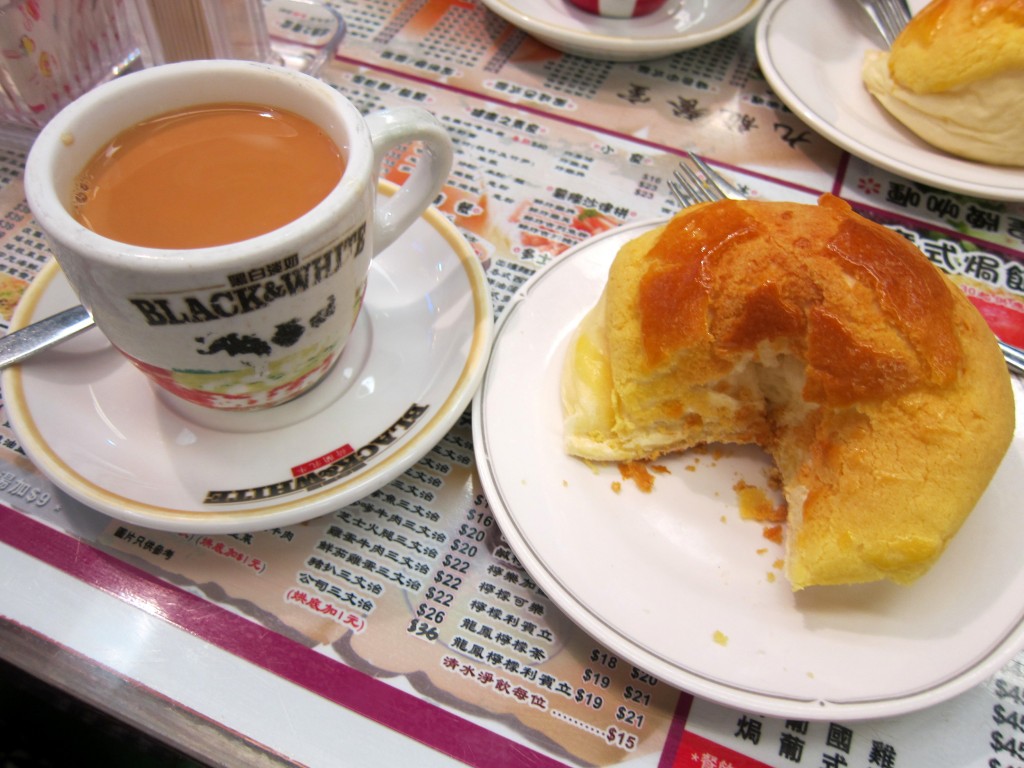
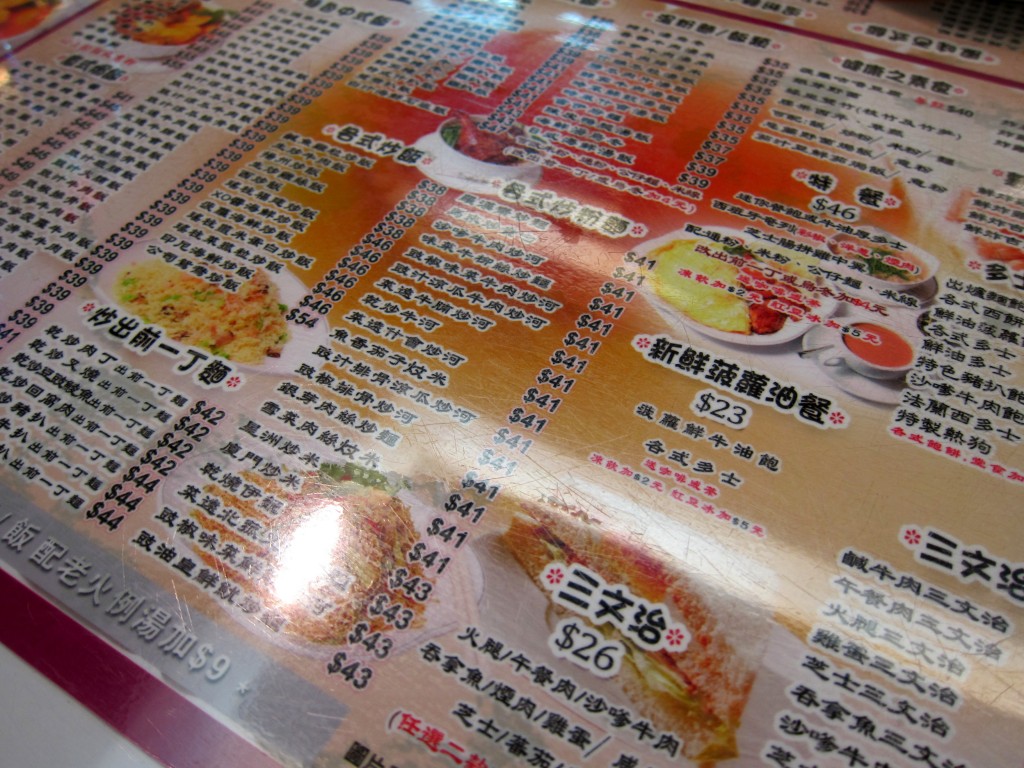
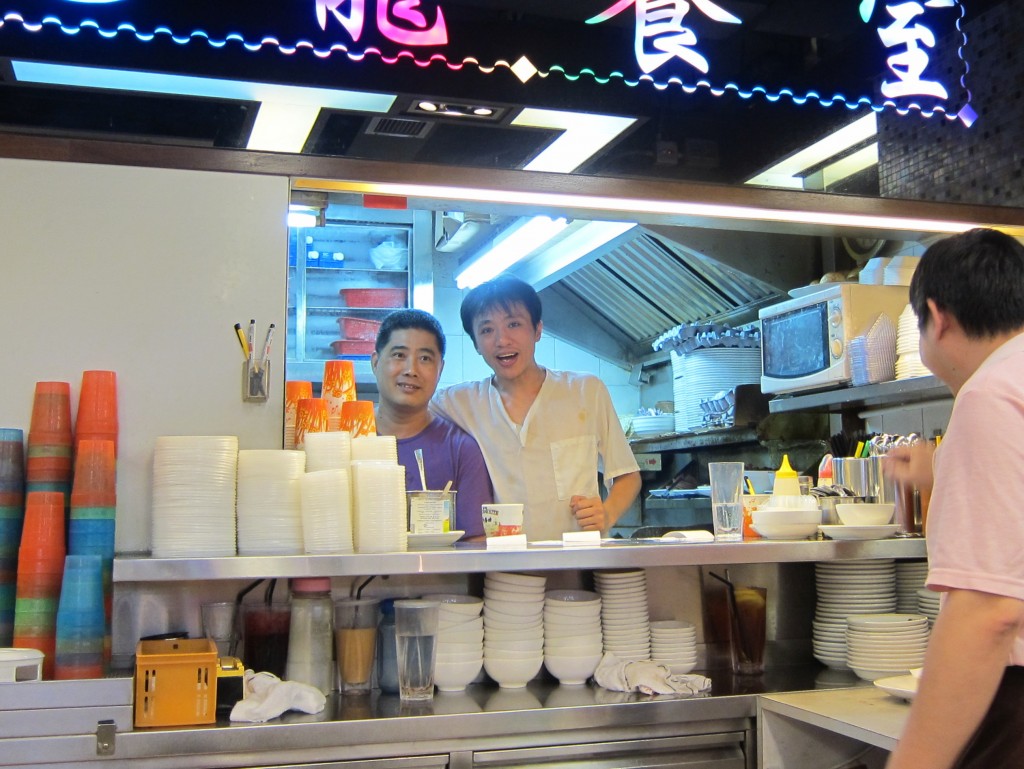
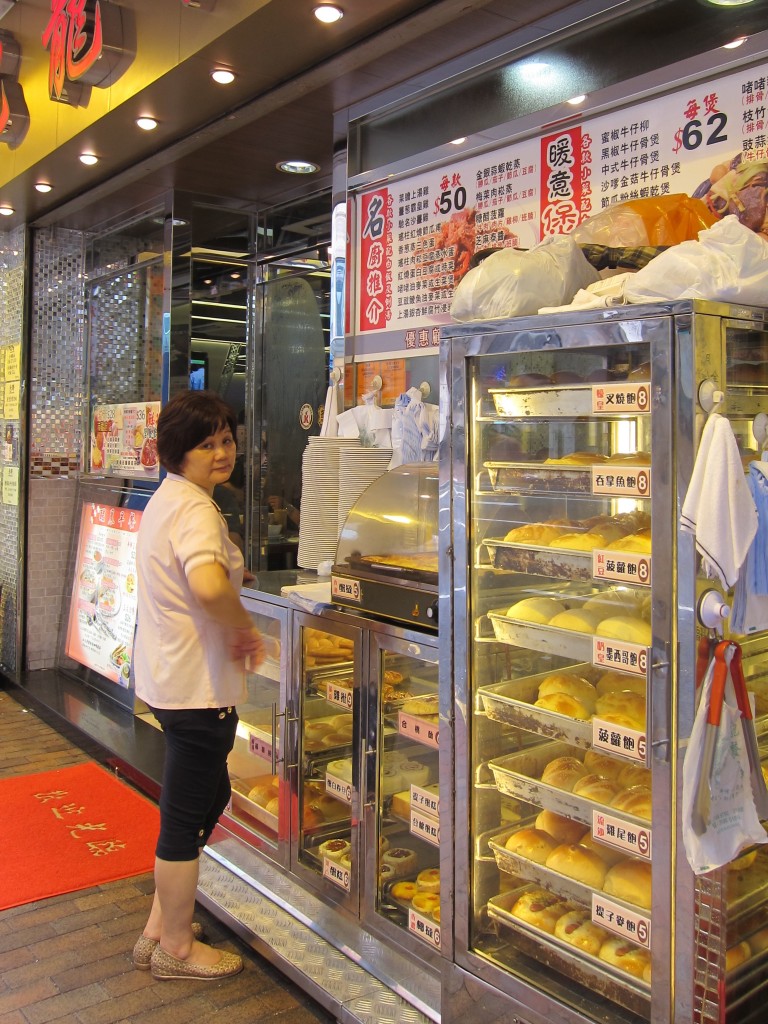
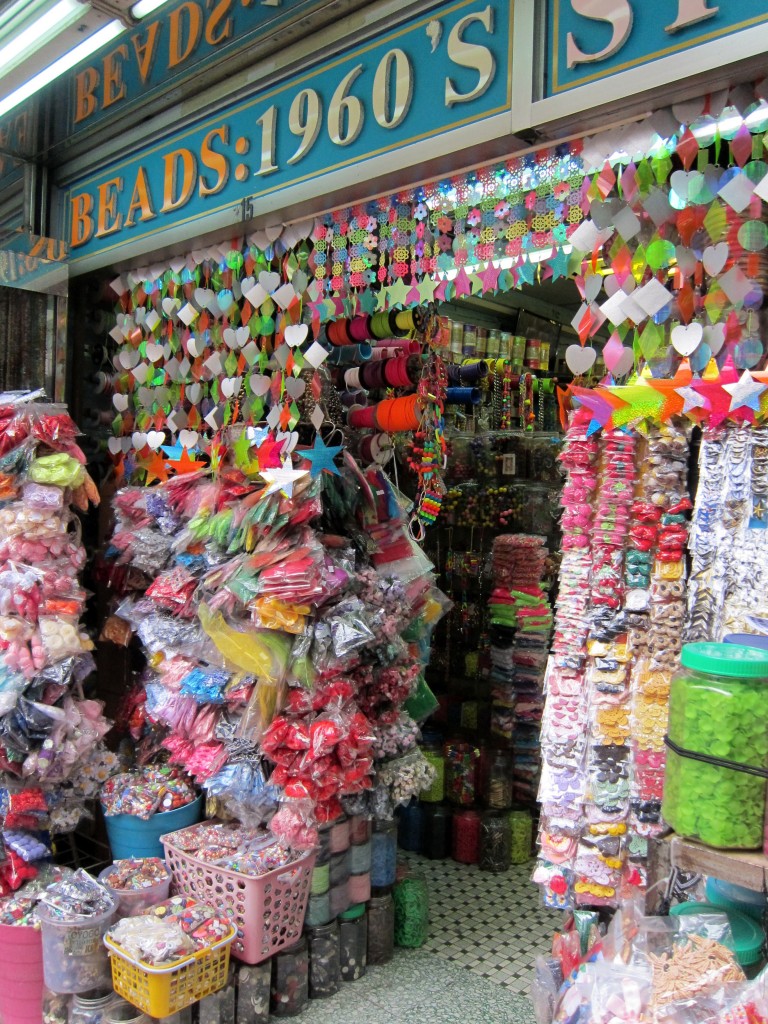
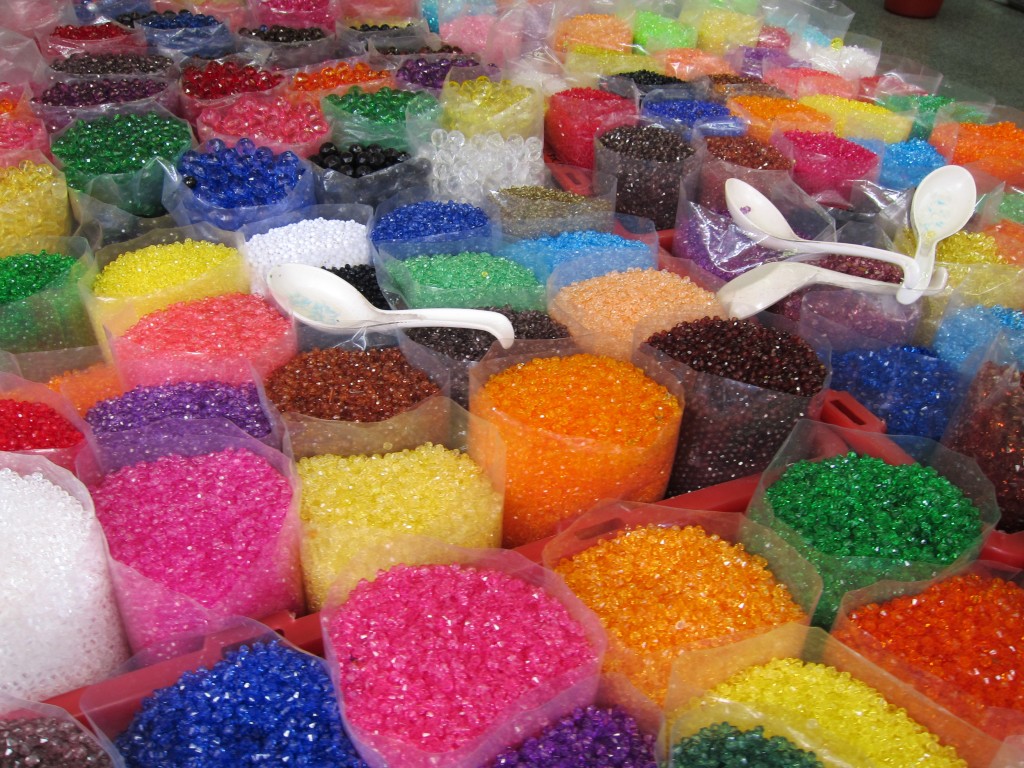
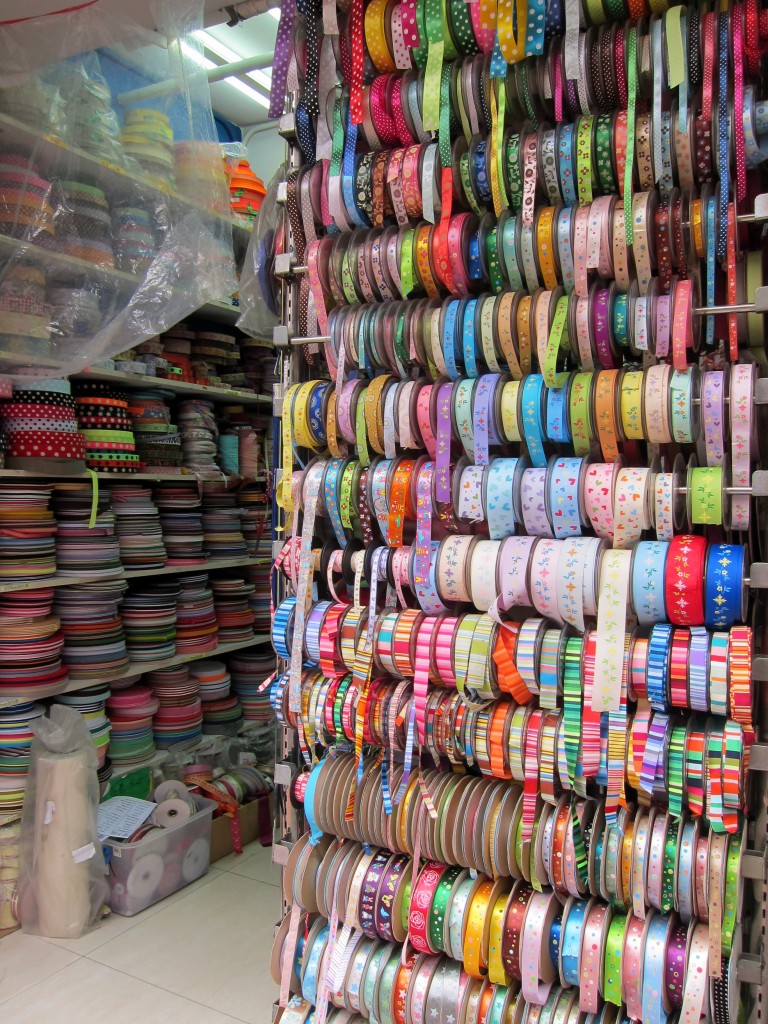
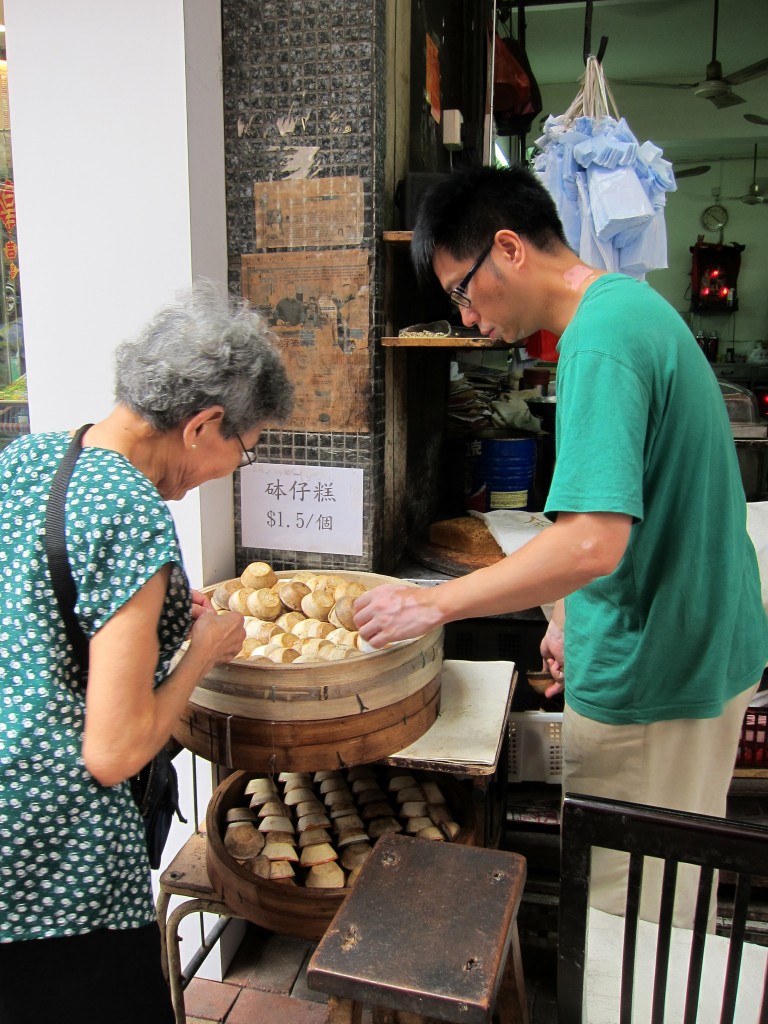
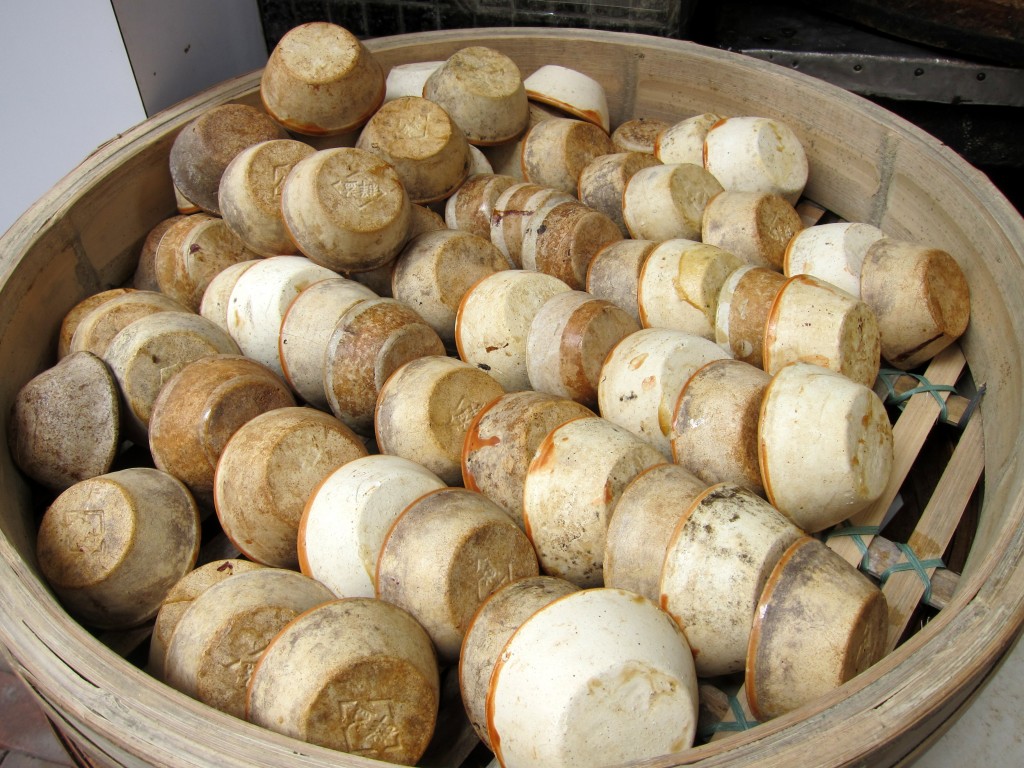
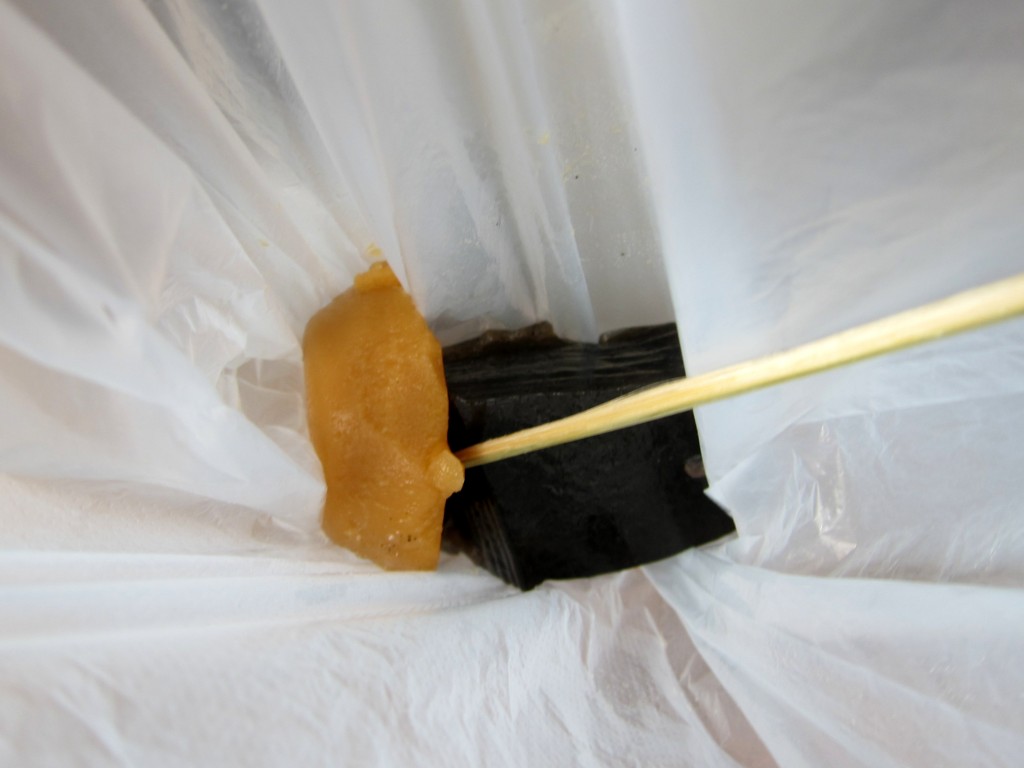
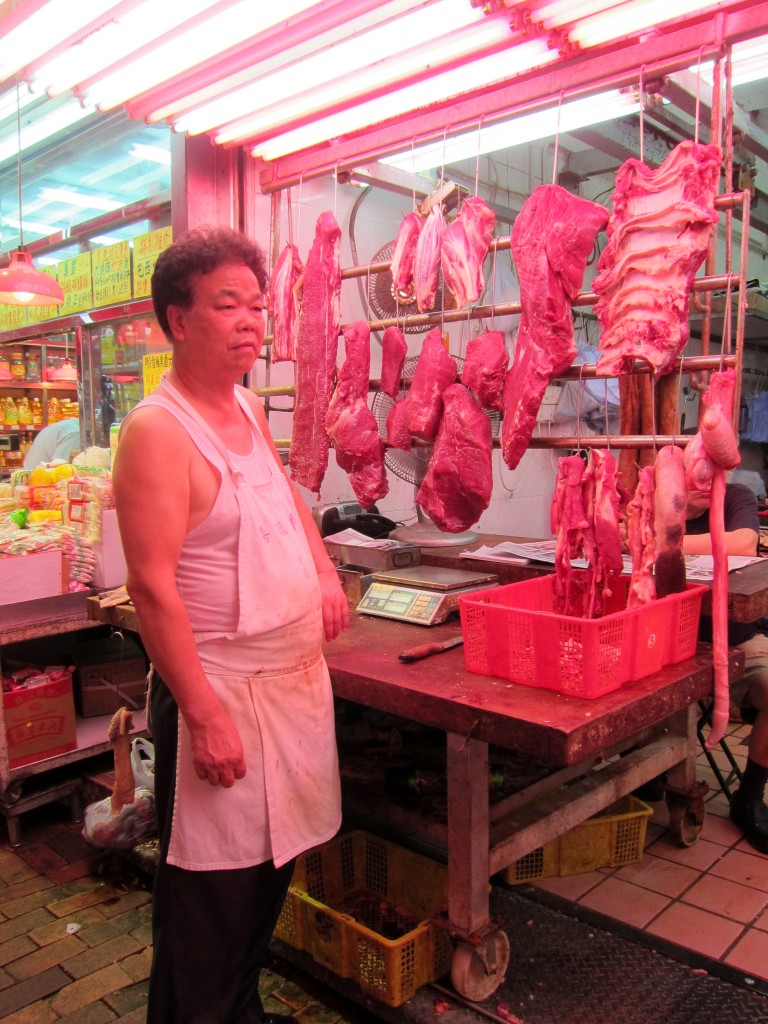
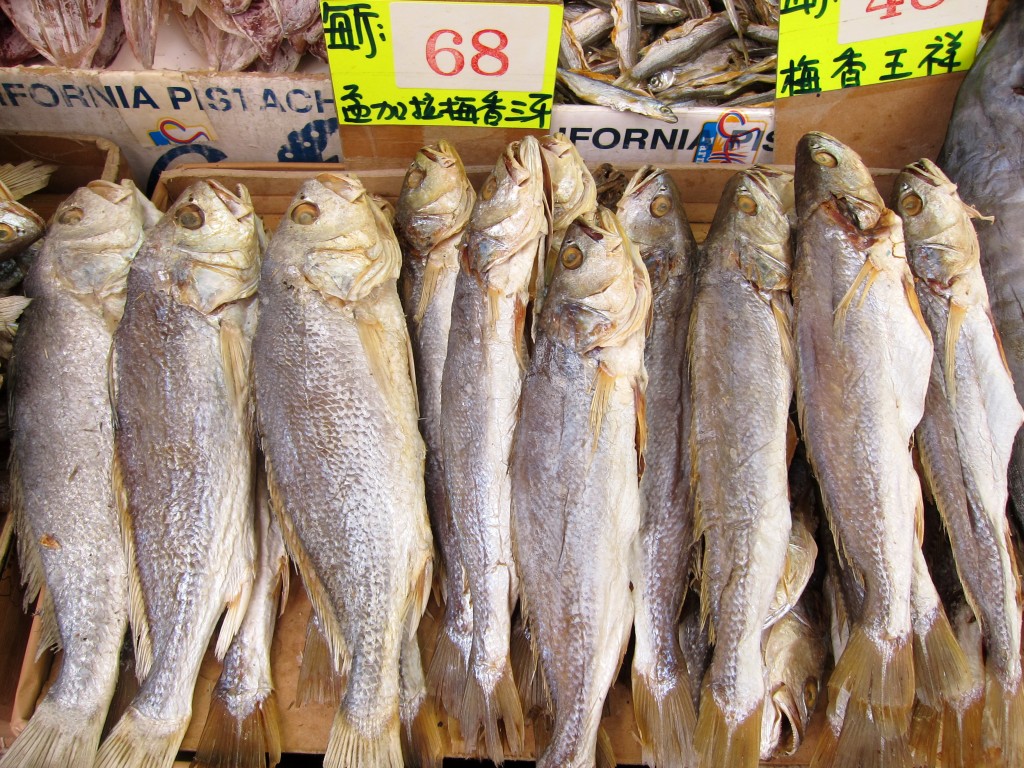
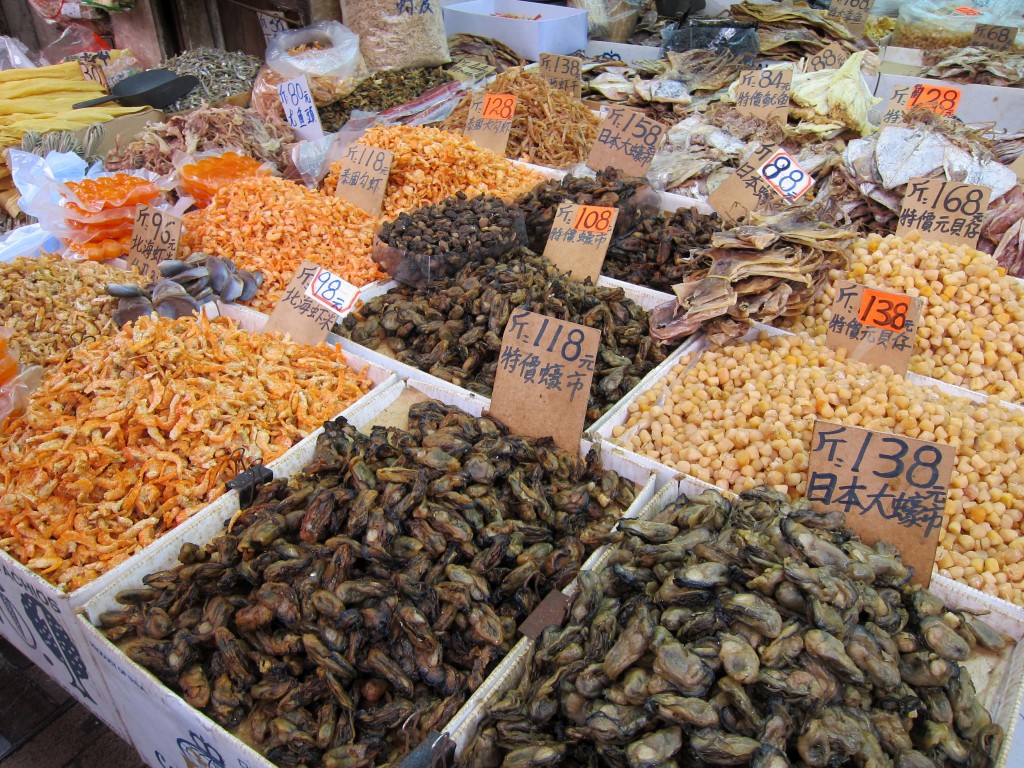
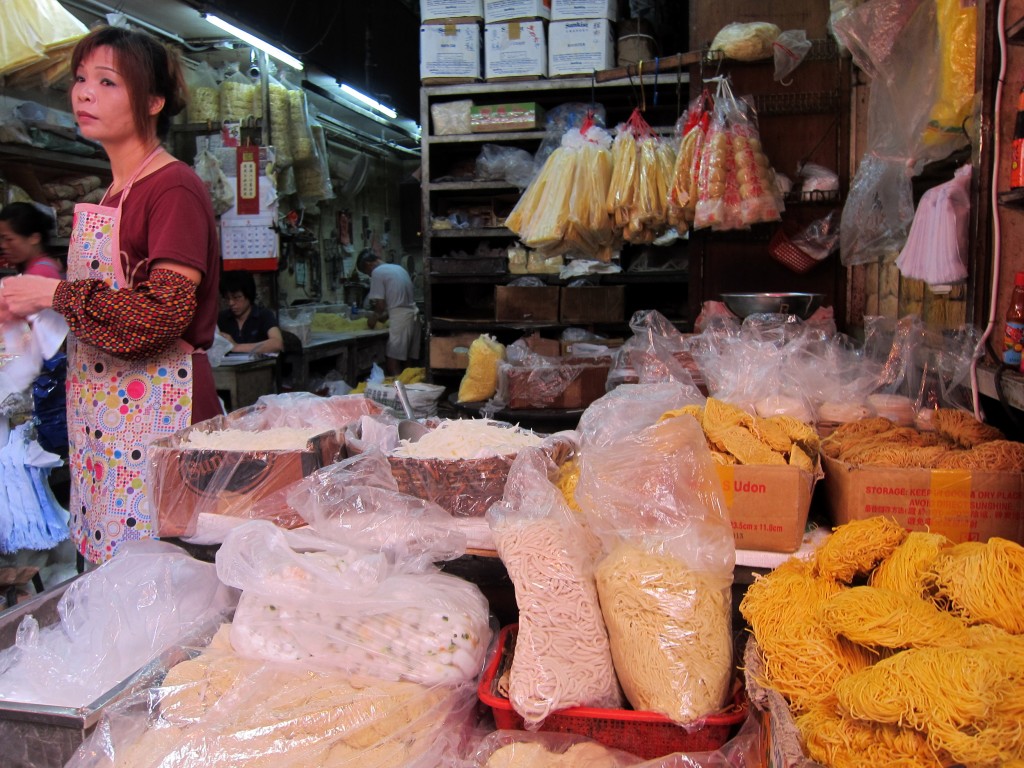
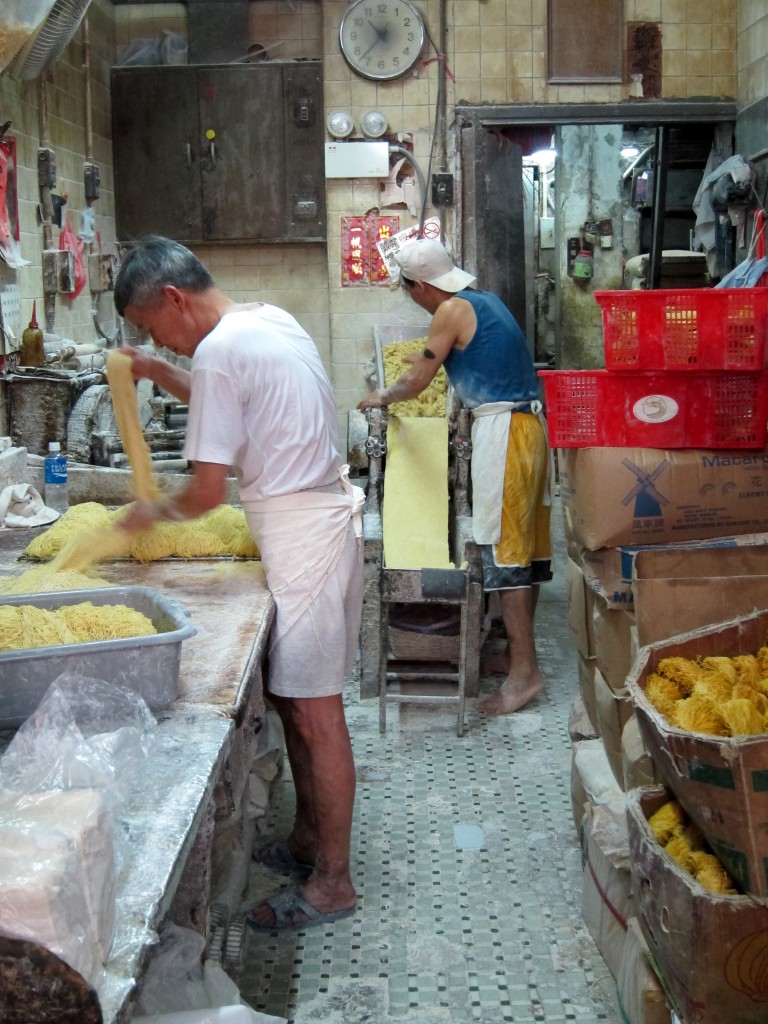
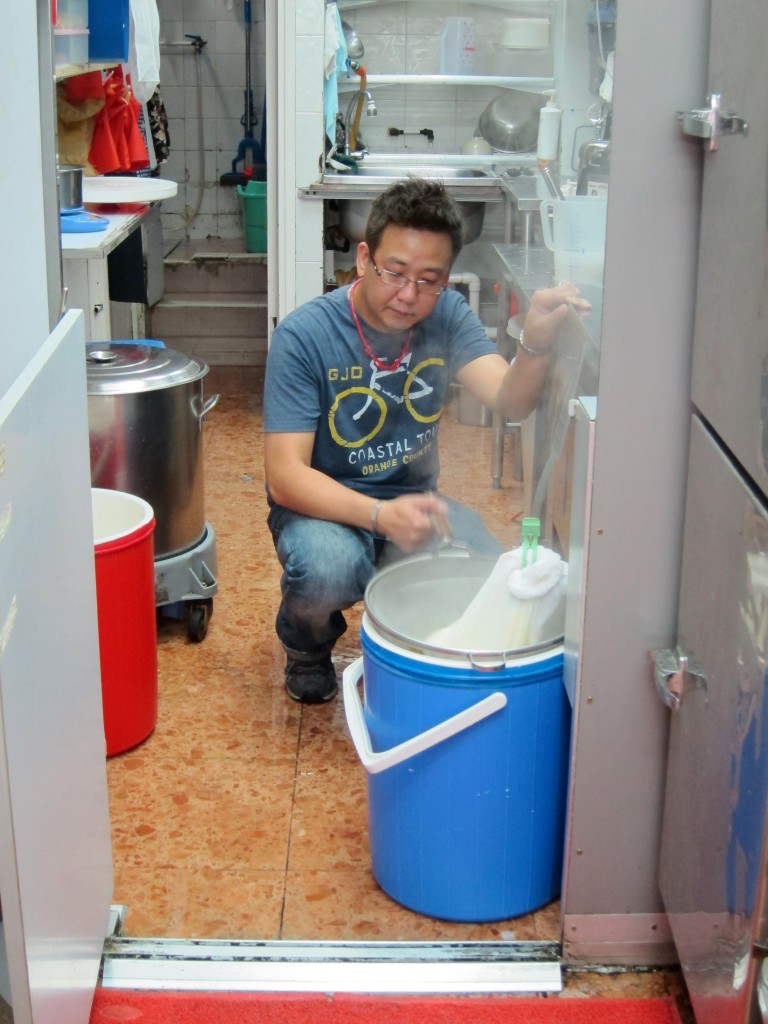
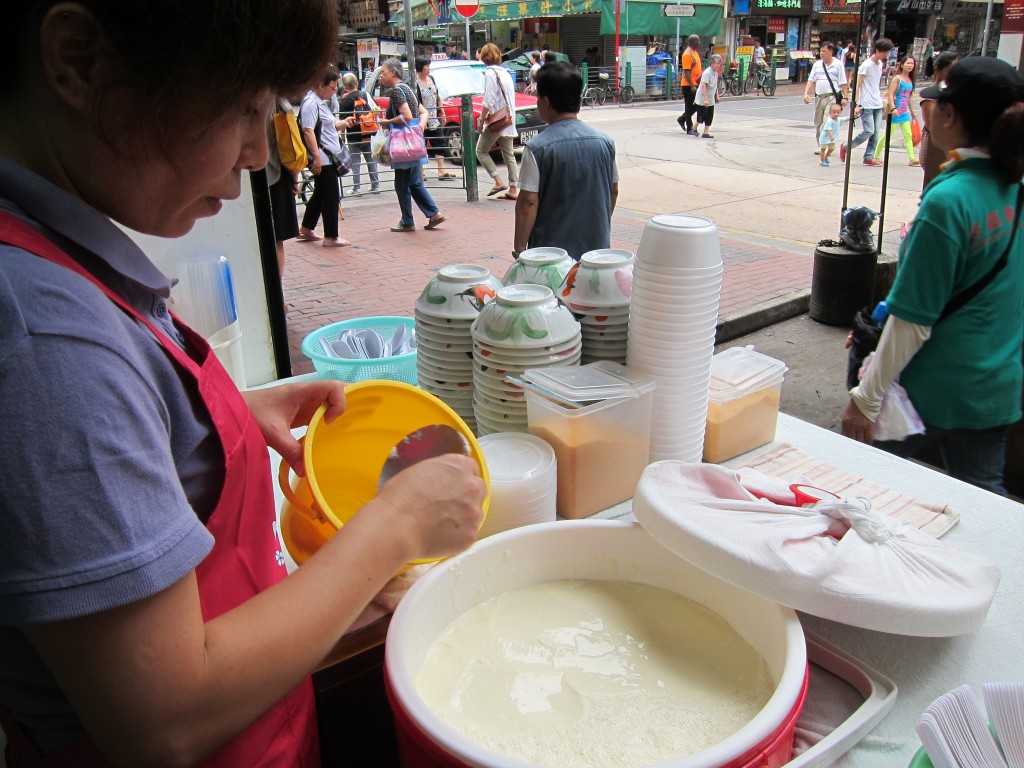
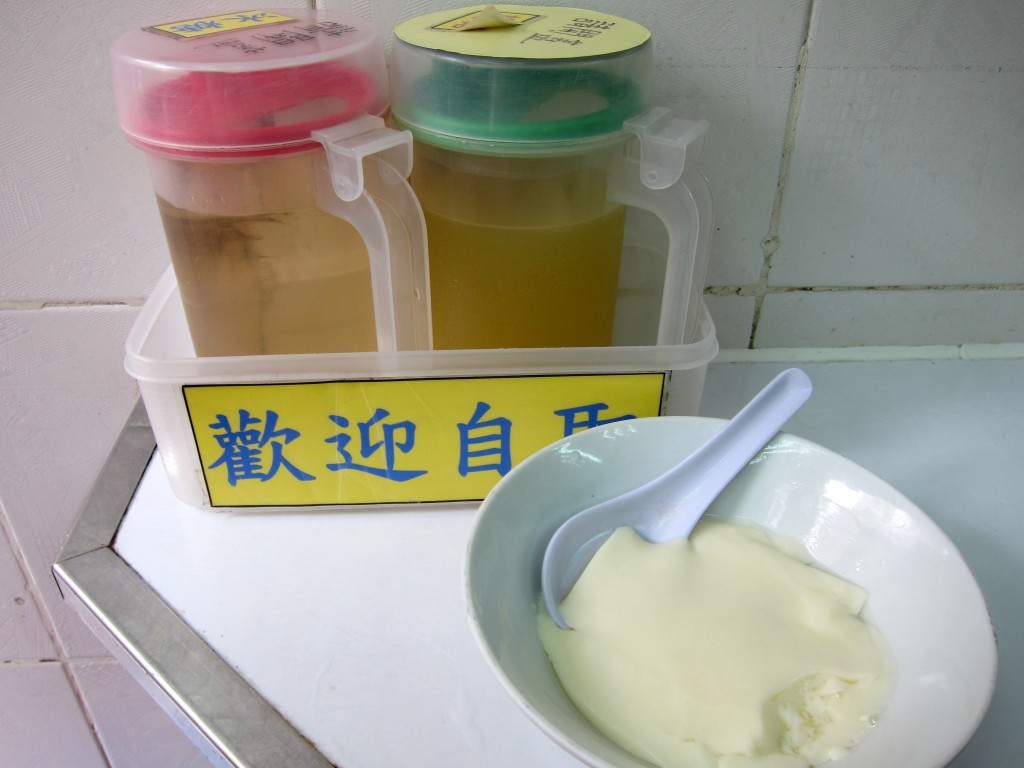
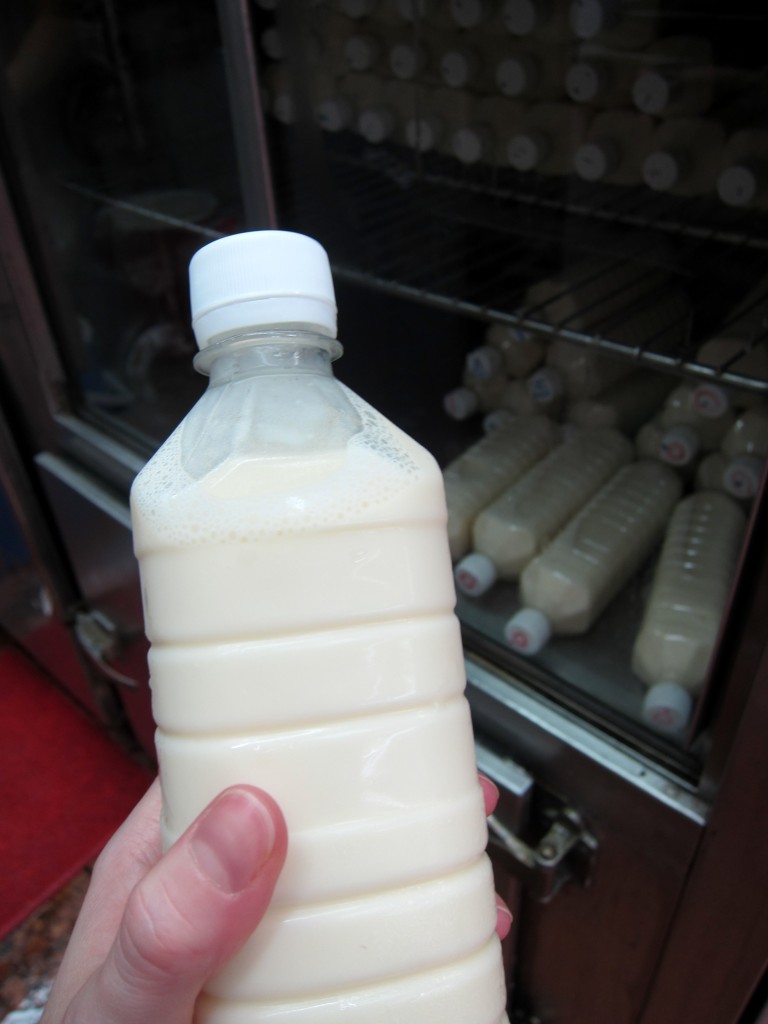
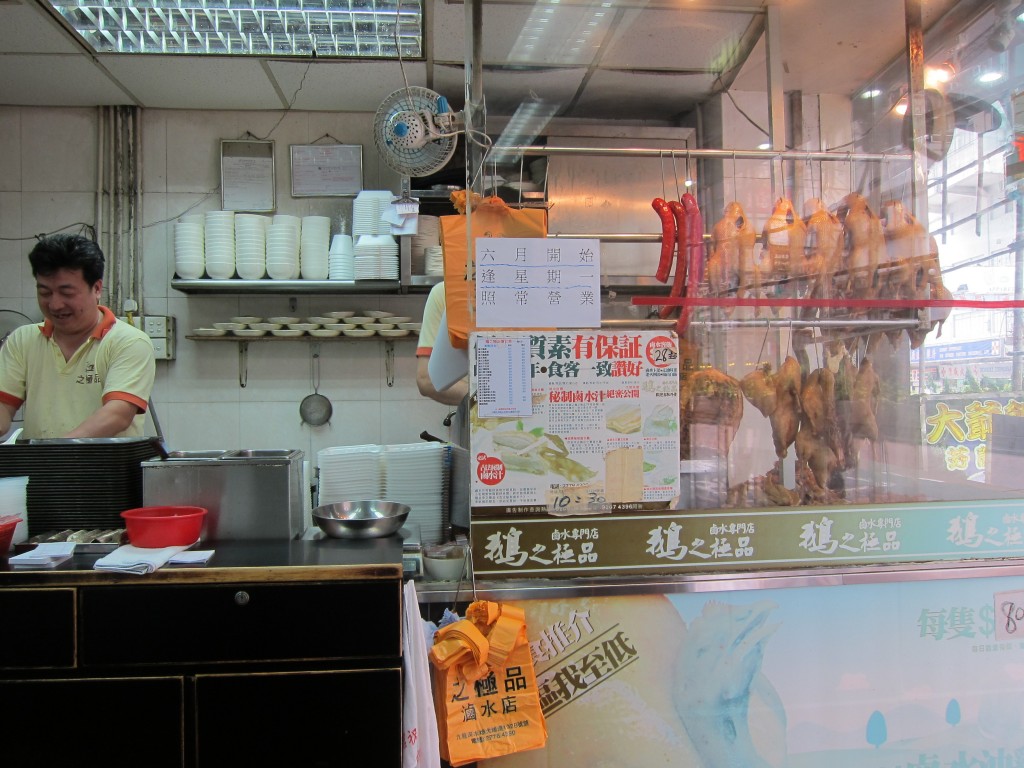
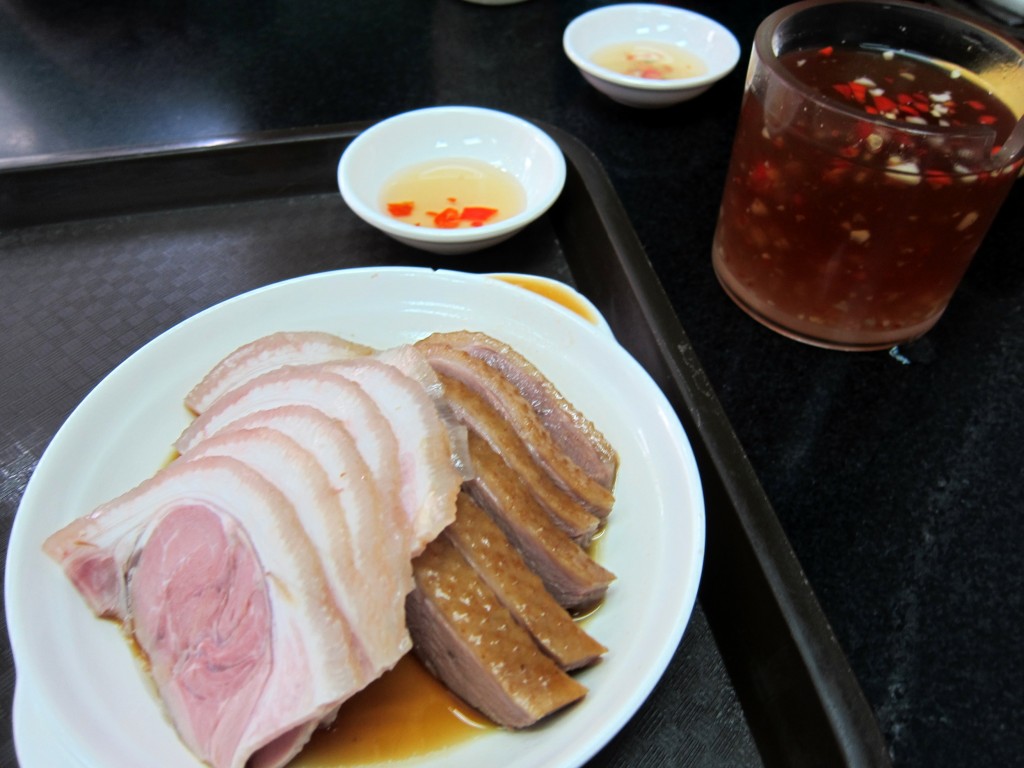
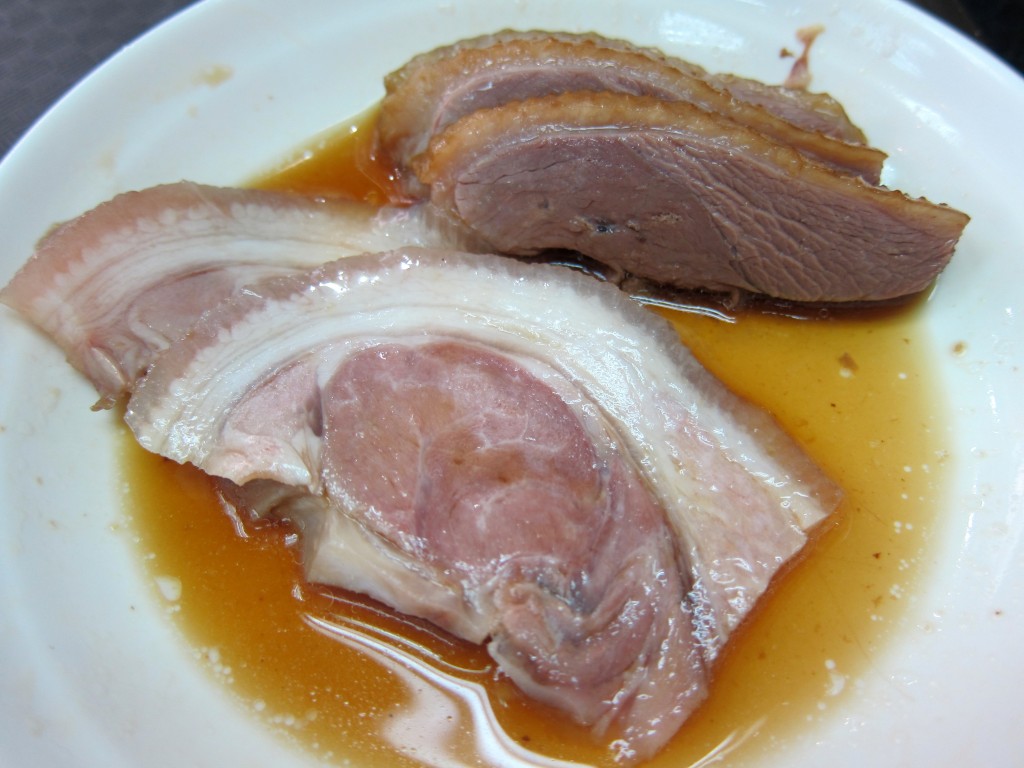
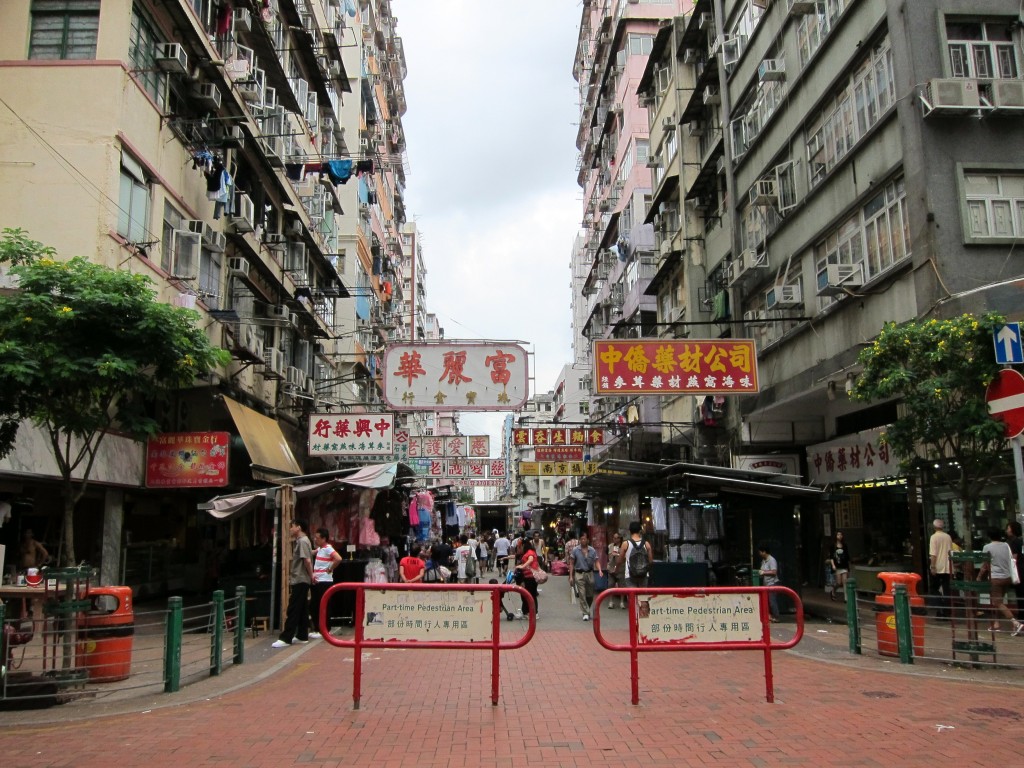
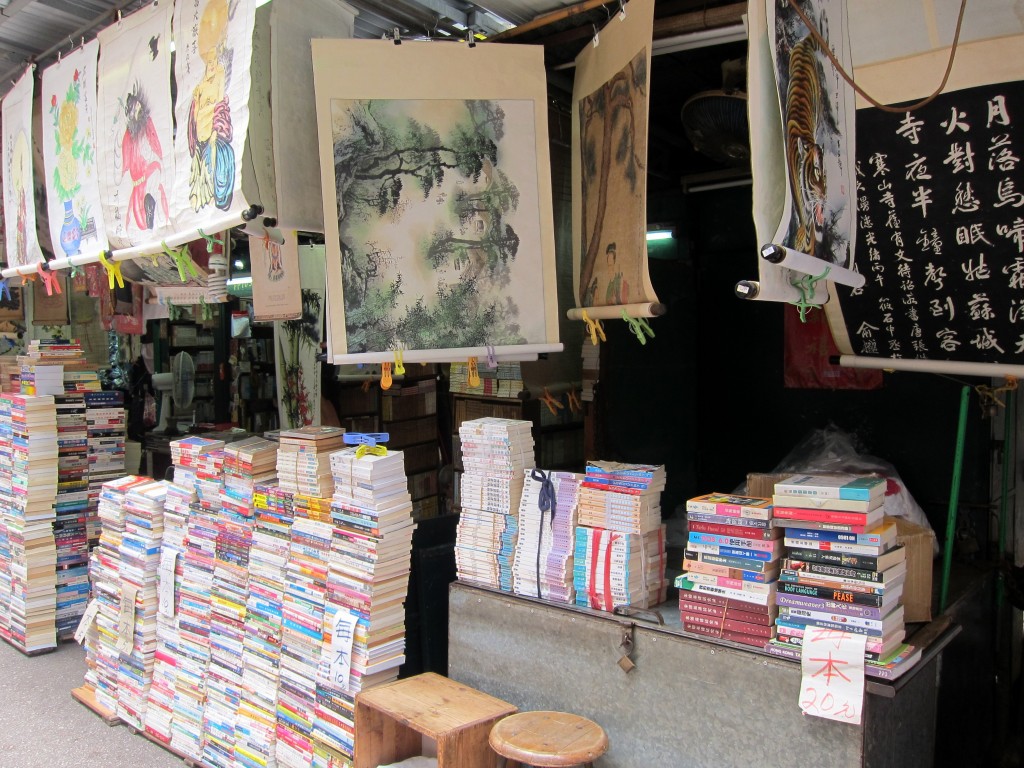

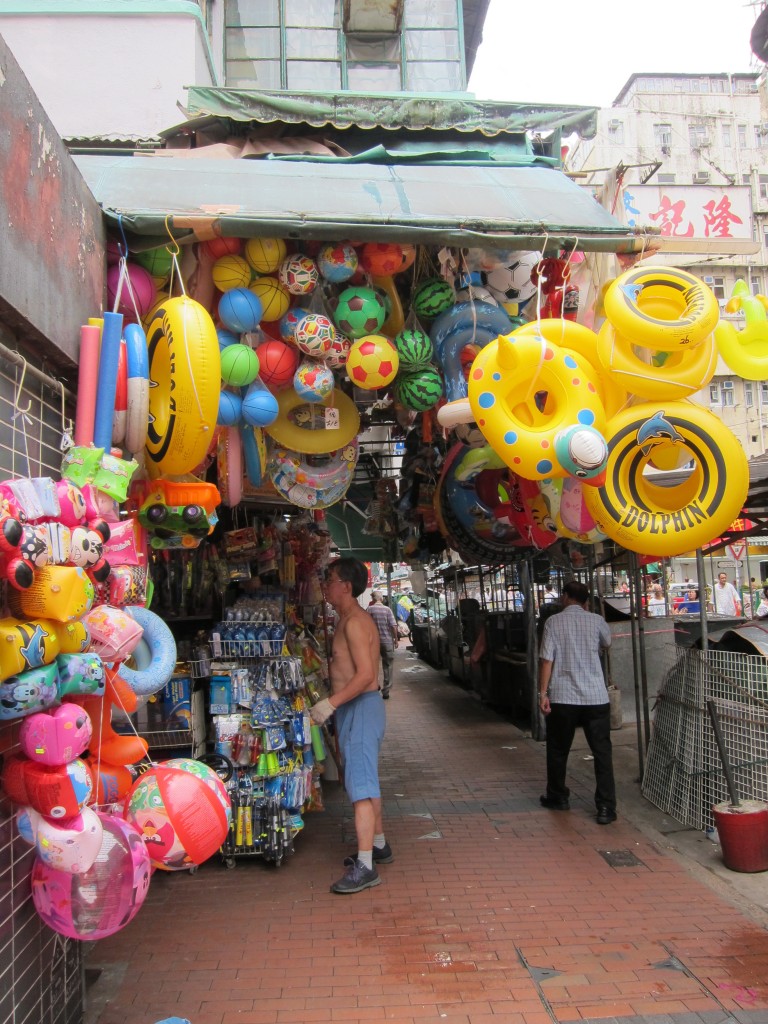
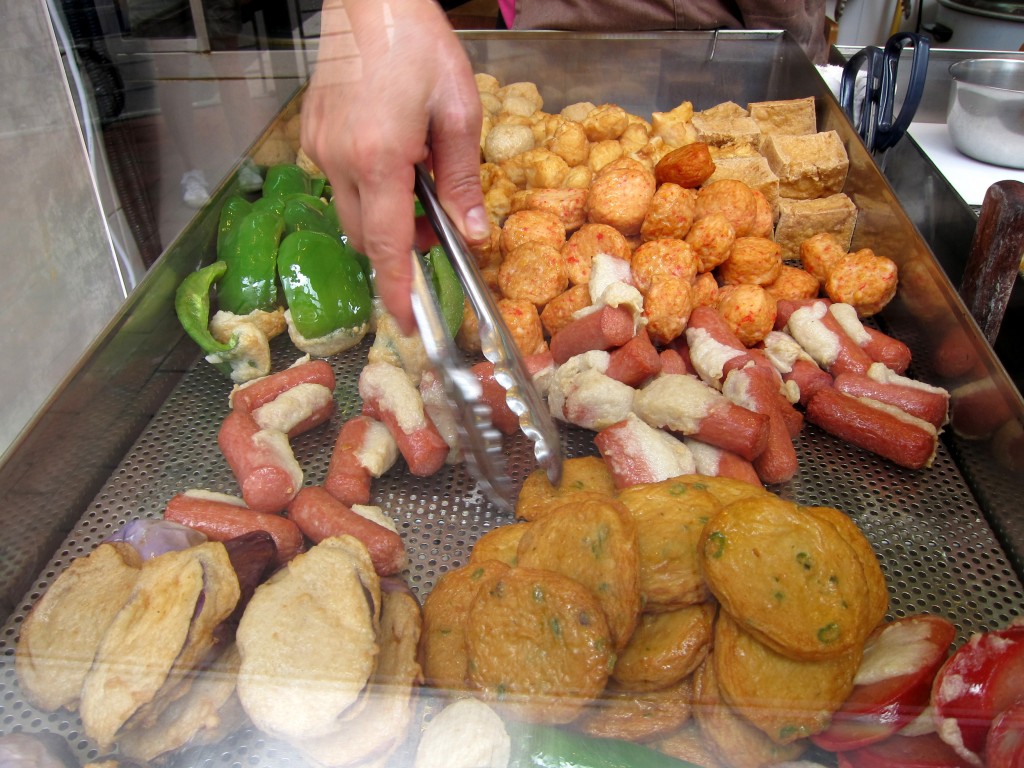
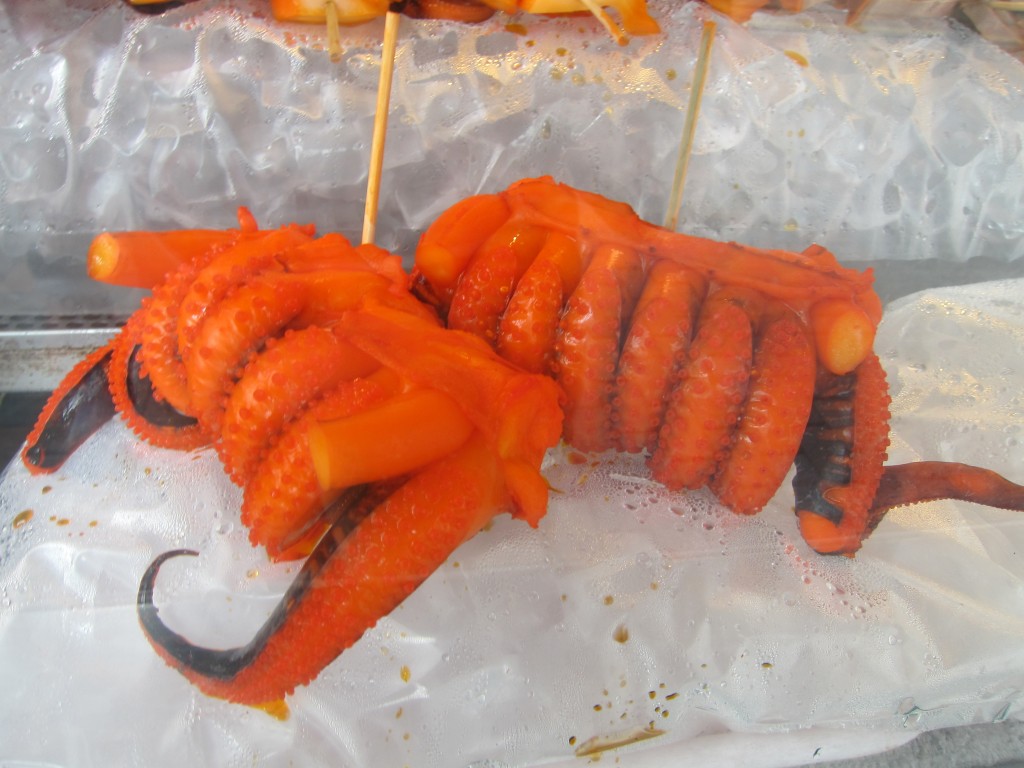
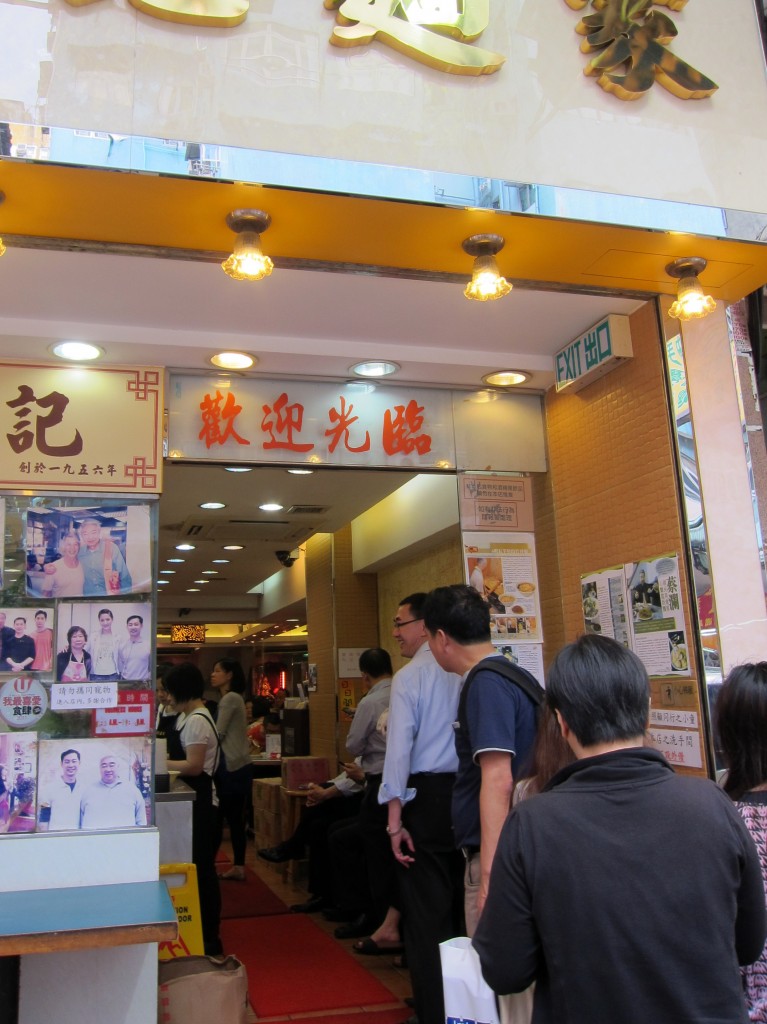
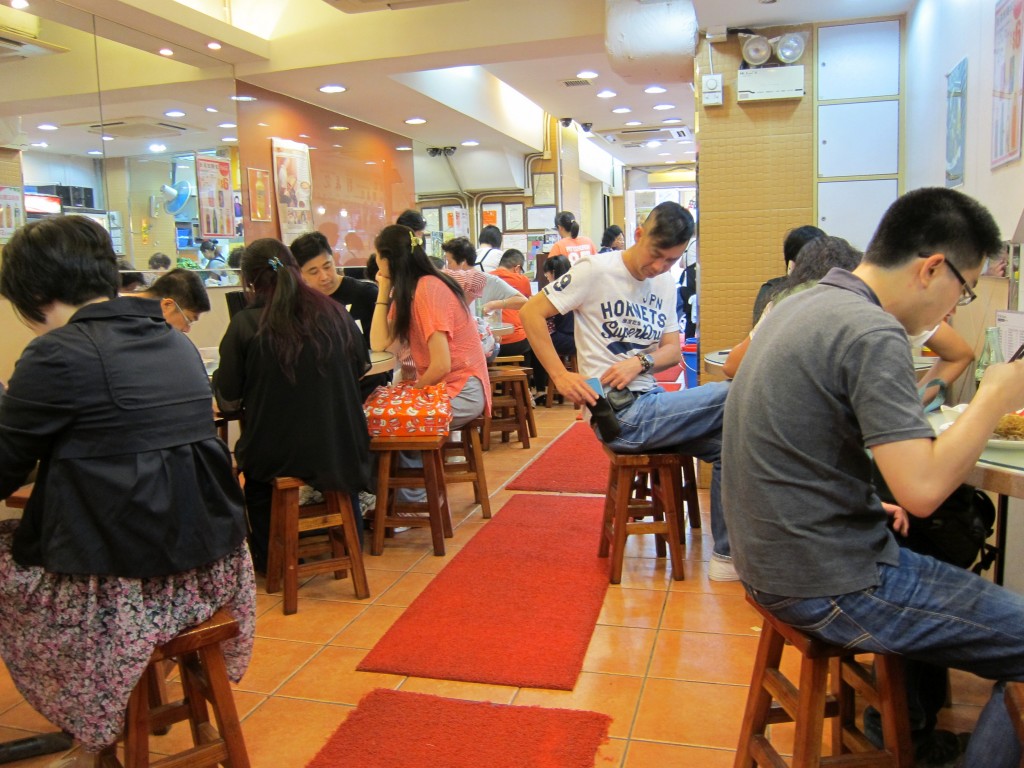
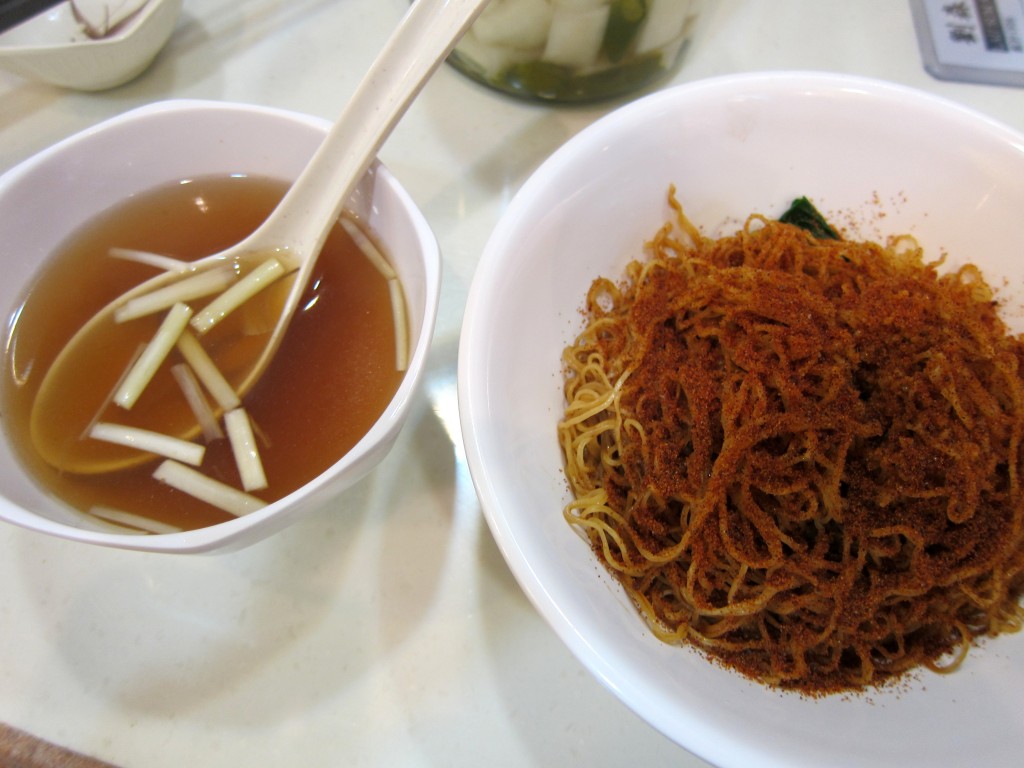
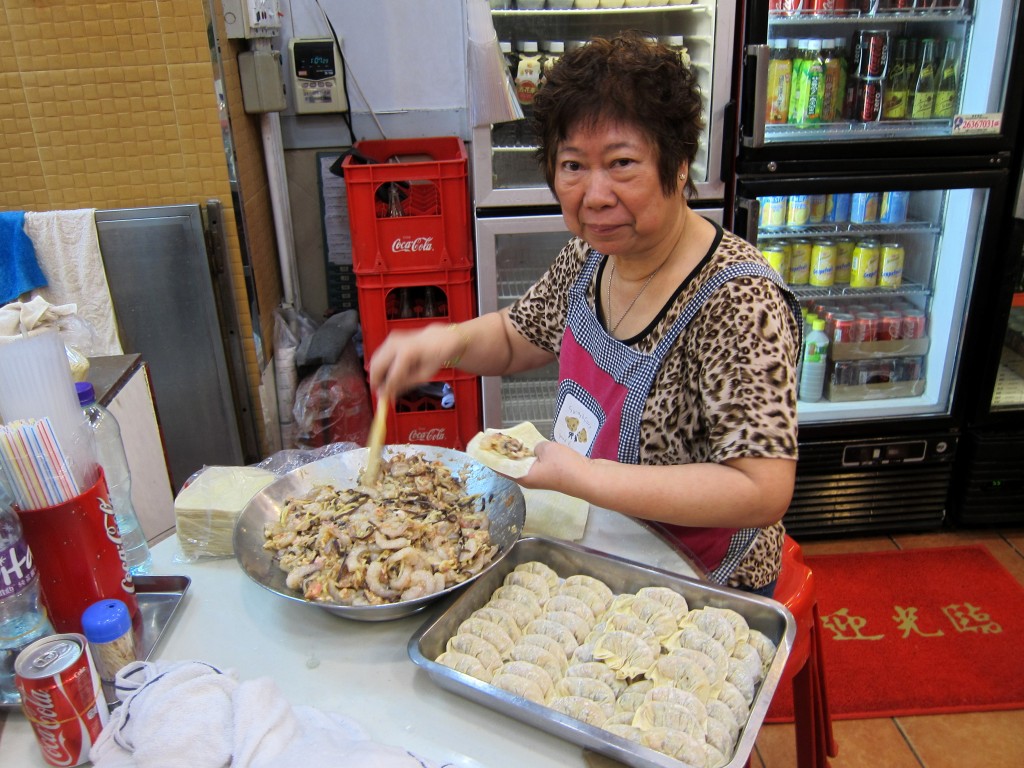
I would have loved to do a tour like this in Hong Kong! I needed someone to explain all the traditional food to me.
I know, I never would have tried all these things on my own. Even if I had been able to find traditional mom-and-pop restaurants serving local treats, the menus were in Chinese characters so who knows what I would have ended up with!
The food looks great. The head-size pineapple buns would be right down my alley.
The pineapple bun was definitely a highlight. The crunchy bits of browned sugar on top were so good!
Oh man, I miss the Hong Kong food scene something fierce! And I was only there for 9 days! I thought Tony & I did a pretty admirable job of finding a lot of local specialties, but obviously we missed a ton as the only thing on this list of yours that we stumbled upon on our own was Pineapple Buns. And you can imagine our intense disappointment when we bit into one and discovered there was no pineapple to be found! Clearly we needed to take a food tour!
Yes, I can imagine! Luckily, our guide warned us in advance that there wouldn’t be any actual pineapple so we could enjoy them for what they were. These were fresh out of the oven and the sugary glaze on top was amazing! I ate the whole thing 🙂
I remember on my one and only trip through Hong Kong, I ended up being in a neighborhood with no tourists, where no one spoke English. It was late at night and the only place I could find open was a tiny shop. I wanted to know what kind of meat was in the buns / dumplings and quite a bit of charades ensued. I may or may not have used my fingers to mime a beak of some kind. Good times… good times!
I wish I could have witnessed your miming! I’m sure you made the waiter’s day 🙂
There WAS no waiter! This little dumpling shop literally had three tables. It was the old woman who was selling and some of her friends sitting around at that late hour. That’s IT. I know the Chinese word for “Vietnam” so they were thrilled that they knew where I came from. Alas, that was the end of all meaningful conversation.
What a wonderful tour! The only food I would have liked was the pineapple bun, but I would have enjoyed walking through the area and having someone give me the history. Good job with the blog 🙂
Thanks Mom!
What a coincidence! We also tried a milk tea and pineapple bun and we agree – the bun was massive, but so delicious. Although HK is pretty expensive, we couldn’t stop craving local food. So nice and different from Chinese cuisine.Love the seafood 🙂
I agree with you completely! I’m going to do another post of the rest of the things I ate in HK – like a massive plate of fish and chips. YUM!
Fabulous article, Heather! Loved all the great pics – you’ve given me a terrible desire to jump on the next Dreamliner flight from Vancouver and go back to Kowloon. Love visiting there! I hope you’ll come by to see what I’ve been up to on my travels – would love to hear from you! You’re a very talented and entertaining writer!
Best regards, Deborah